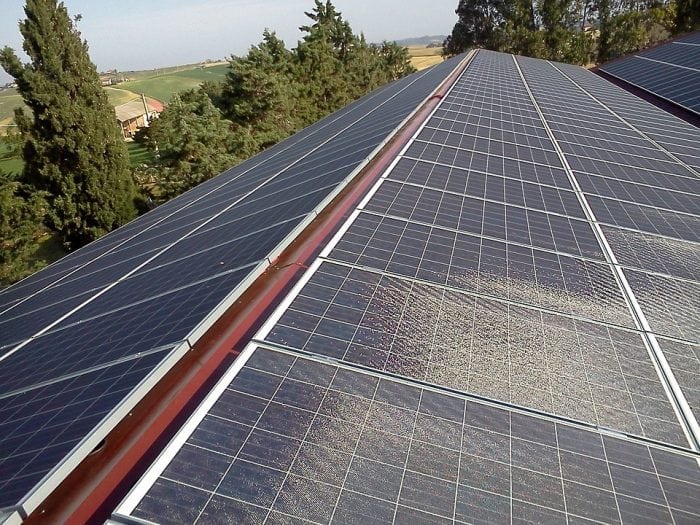
So far, solar energy is the most exploited alternative energy source, and photovoltaic technology is widely used for direct conversion of photons from the sun into electricity. However, the photovoltaic module efficiency decreases as the PV cell temperature increases. As a result, thermoelectric generators are coupled to the PV modules to improve its output power, efficiency and utilize the waste heat.
Since a majority of the infrared region of the solar radiation is converted into waste heat, it increases the temperature of the PV cell, thereby reducing its performance and lifetime [1]. In addition, increasing temperature benefits thermoelectric generators while adversely affecting the photovoltaic module [2]. This paper presents a study of PV-TEG for solar radiation concentration ratio ranging from 1 to 5. Researchers examined the irreversibilities and conditions for optimal PV-TEG operation.
The findings suggested that for the hybrid cogenerating system, the optimum condition corresponding to the maximum power output for solar radiation of 1000W/m2 is a concentration ratio of 3, with XT as the thermoelectric hot-cold junction ratio under this condition, the combined system output power increases up to 86% from a unit concentration.
Furthermore, the analysis predicts that irreversibility increases with increasing concentration. For G=1000 W/m2 and XT=0.4, the irreversibility increases by 270% as the concentration is increased from 1 to 5. The higher values of the irreversibilities indicates the inefficiency of the CPV-TEG hybrid system. Thus, the irreversibilities can be reasonably handled by operating the system at optimum operating conditions.
However, the energy efficiency of the hybrid is 8% less than that corresponding to the theoretical maximum obtainable. The paper also predicts the possibility of a hot spot formation after a reasonable period of operation from observing the obtained cell temperatures.
It can be seen that the photovoltaic power output is within close range compared to the total output of the combined system. From this, it can be conclusively stated that the bulk of the power output is from the PV system.
Further research and modifications are essential for improving system performance. Future studies and investigations are required for understanding the effects and nature of hot spot formation due to elevated temperatures at higher concentrations. Advanced research in this field also includes the design of a maximum power point tracking (MPPT) system to operate the hybrid system at optimum operating conditions which will eventually minimize the irreversibilities in the system and improve its overall performance.
These findings are described in the article entitled Thermodynamic evaluation of irreversibility and optimum performance of a concentrated PV-TEG cogenerated hybrid system, recently published in the journal Solar Energy. This work was conducted by Sarveshwar Singh, Onyebuchi Isreal Ibeagwu, and Ravita Lamba from Artech Information Systems, Noida; University of Nigeria, Nsukka; and the Indian Institute of Technology Delhi, respectively.
References:
- Ito, Y., Mizoshiri, M., Mikami, M., Kondo, T., Sakurai, J., Hata, S., 2017. Fabrication of thin-film thermoelectric generators with ball lenses for conversion of near-infrared solar light. Jpn. J. Appl. Phys. 56 (6S1) 06GN06.
- Bjørk, R., Nielsen, K.K., 2015. The performance of a combined solar photovoltaic (PV) and thermoelectric generator (TEG) system. Sol. Energy 120, 187–194.








